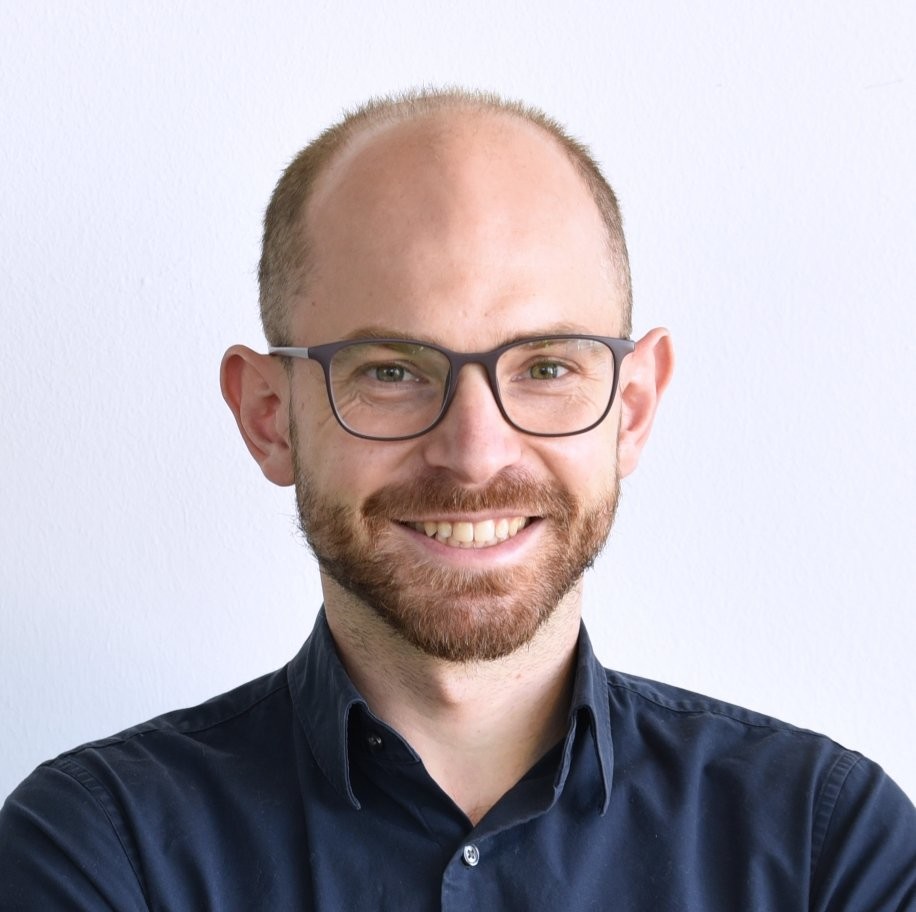Amongst the several standard facilities you would expect at a biomedical research institute, CeMM also provides a time capsule, which facilitates time travel through the institute’s history. Let me take you on a quick journey through time that tells my own story of this place.
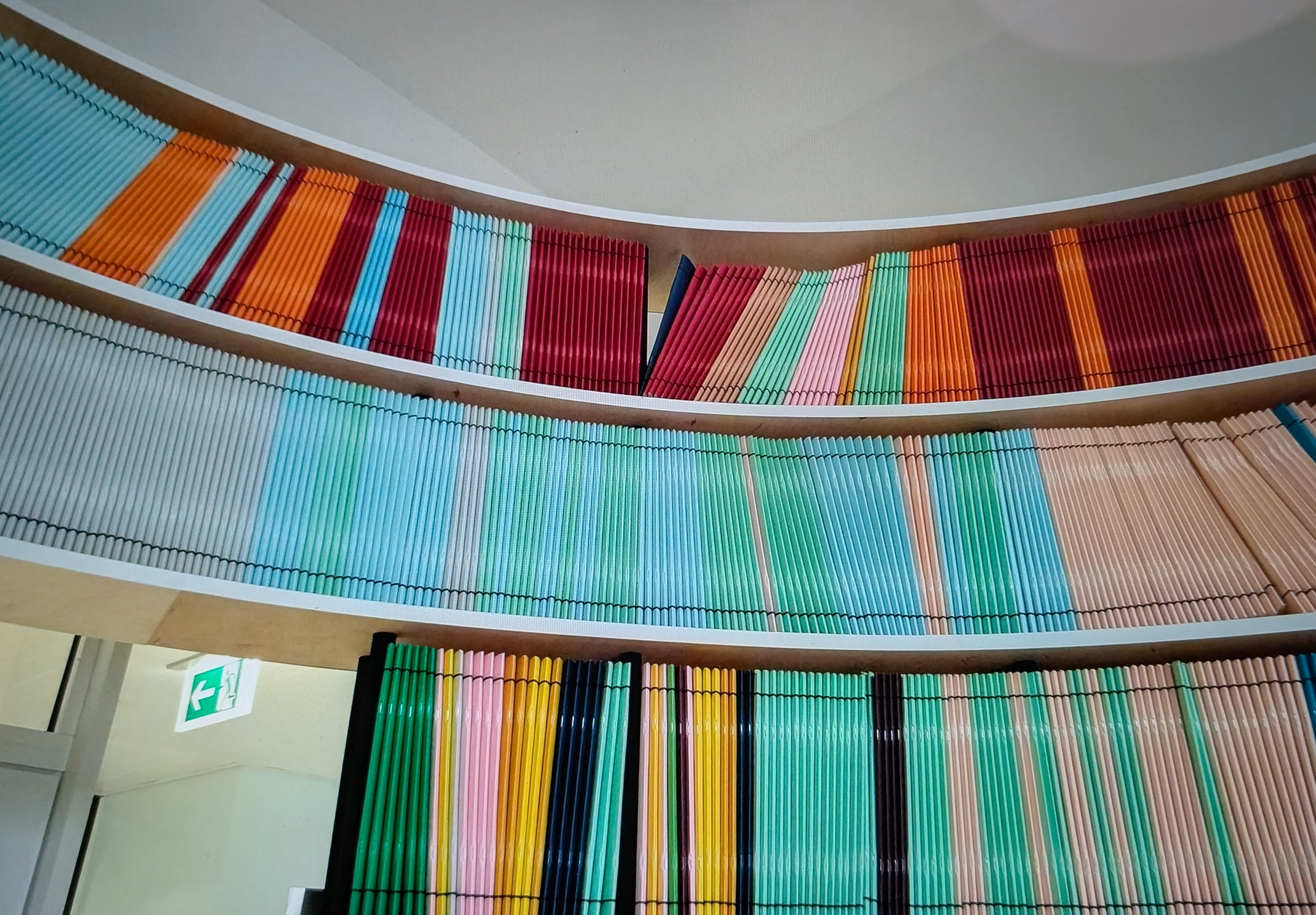
I left my first note in the capsule in April 2018, filing it in a way that should facilitate easy recovery (the dark blue book in the top row). At that time, I applied for PhD positions, but ended up to pursue this part of my academic career in Zurich.
It was only in 2022 that I returned to CeMM, as well as to the AI Institute, to perform research on biomedical AI. But by the time I arrived, the note was not at its place anymore, as if my first visit never happened. I knew I had to fix it, as the memory was only valid if properly placed in the time capsule. But searching the shear mass of notes through time proved to be difficult and the buzzling life at CeMM soon distracted me from this task. It should take three more years to finally retrieve the memory.
We engaged in protein generative AI design, simulated biology with LLMs and spoke to cells in English language. Aside from the exciting research, I enjoyed the freedom and engaging colleagues of my institutes to organize events such as wakeboarding in the Danube river, multi-player gaming in virtual realities, and capturing our lab’s and the AI Institute’s inner workings with drone recordings. Live was fun, but I felt the need to move on.
It was at this time that the time capsule called my attention again, making me spend my afternoons sifting through all the notes to recover my lost memory. After scanning ~350 books, I found it, sneakily hiding amongst its same-colored comrades.
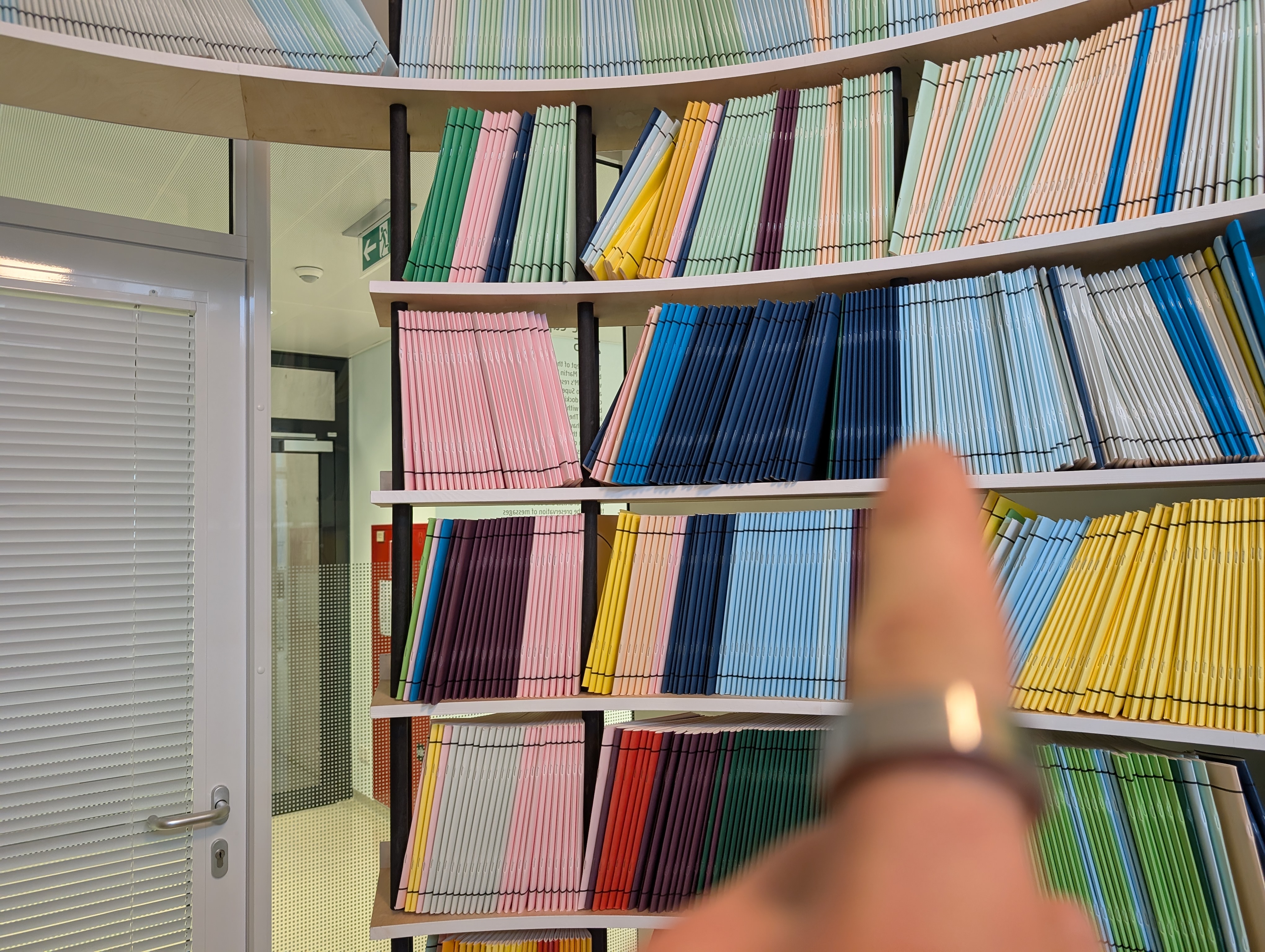
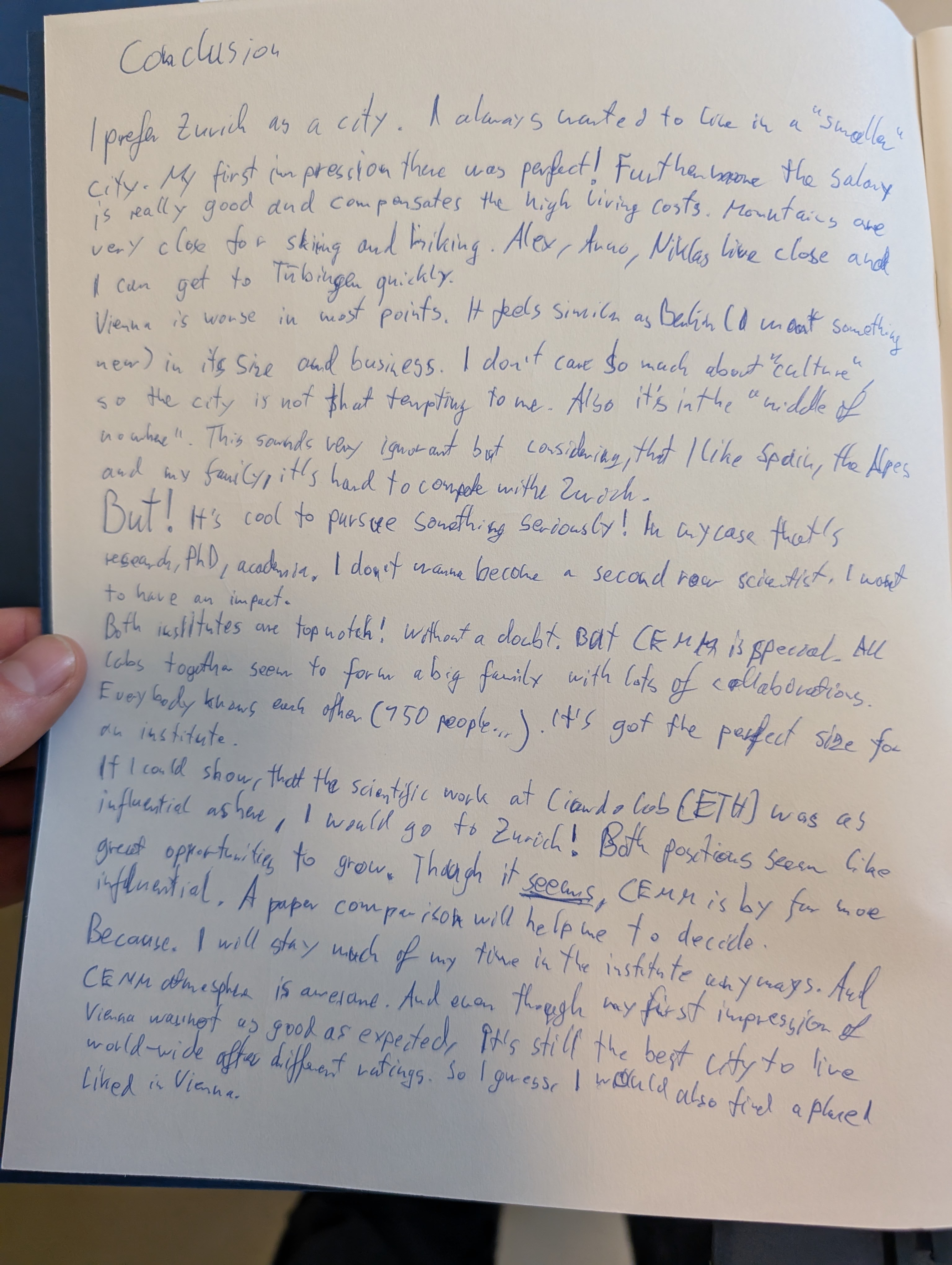
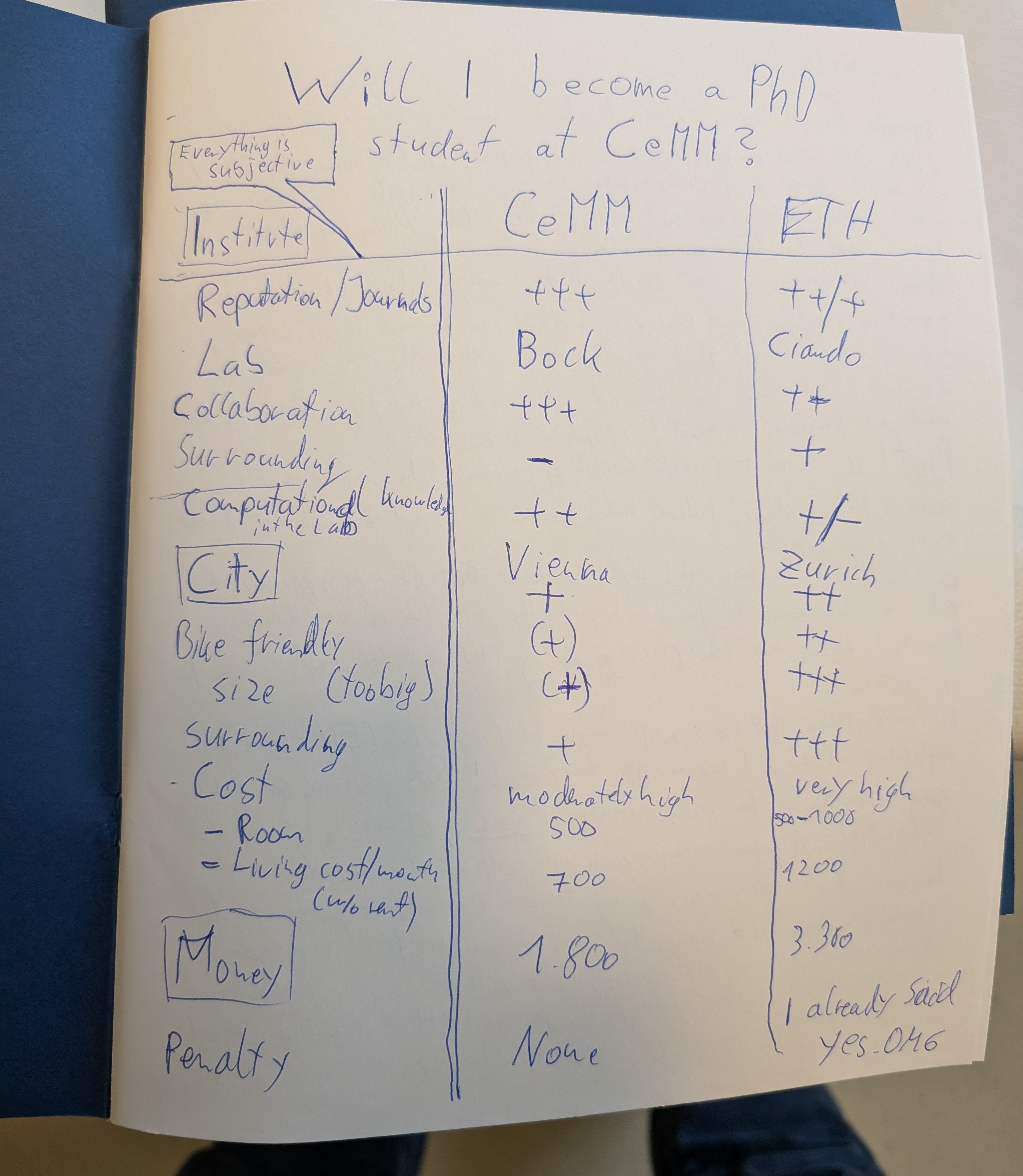
The time in the capsule allowed me to reflect on its usage and the memories it preserved. There are roughly 9000 notebooks in ~13 different colors. In my search, I found a total of 10 written notes, allowing to estimate that 3% of all books have an entry. None of the notebooks I scanned contained more than a single note. (These extrapolations are of course subject to biases such as a preference for book colors and positions).
As my PhD showed me what academia is, my postdoc allowed me “inhabit” it and truly become part of a scientific community. At CeMM and the AI Institute, I worked on relevant and complex problems, met Nobel laureates and got a unique perspective on the rich Viennese cultural heritage.
My notebook is back at its original place now and waits for more stories to be written.
I wrote this to thank all the great people I got to know and interact with in Vienna. Thank you Christoph, Marco, Franci, Stephan, Rapha, Animesh, Jake, Rob, Fangwen, Thomas, Mihaela, Victoria, Eugenia, Moritz, Dariia, Sean, Nicole, Celine, Jen, Salvo, Annka, Giulio, Peter(s), Daniel, Adam and all others from the Bock lab, CeMM, AI Institute and elsewhere.
